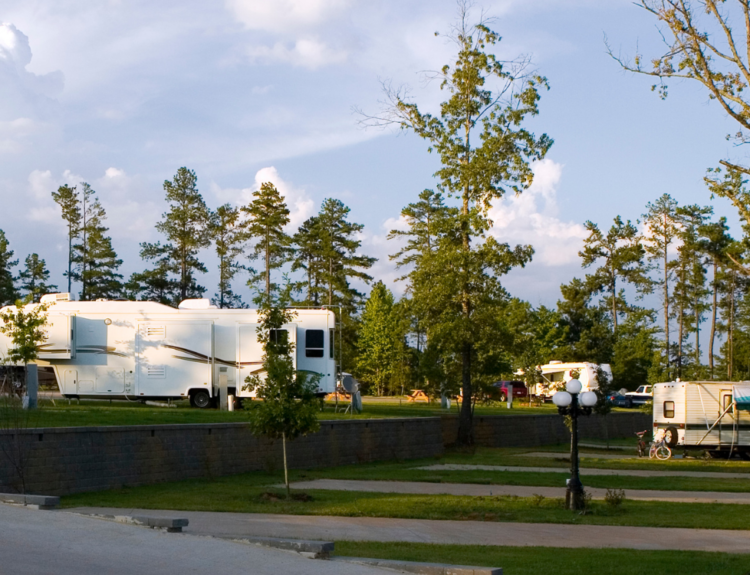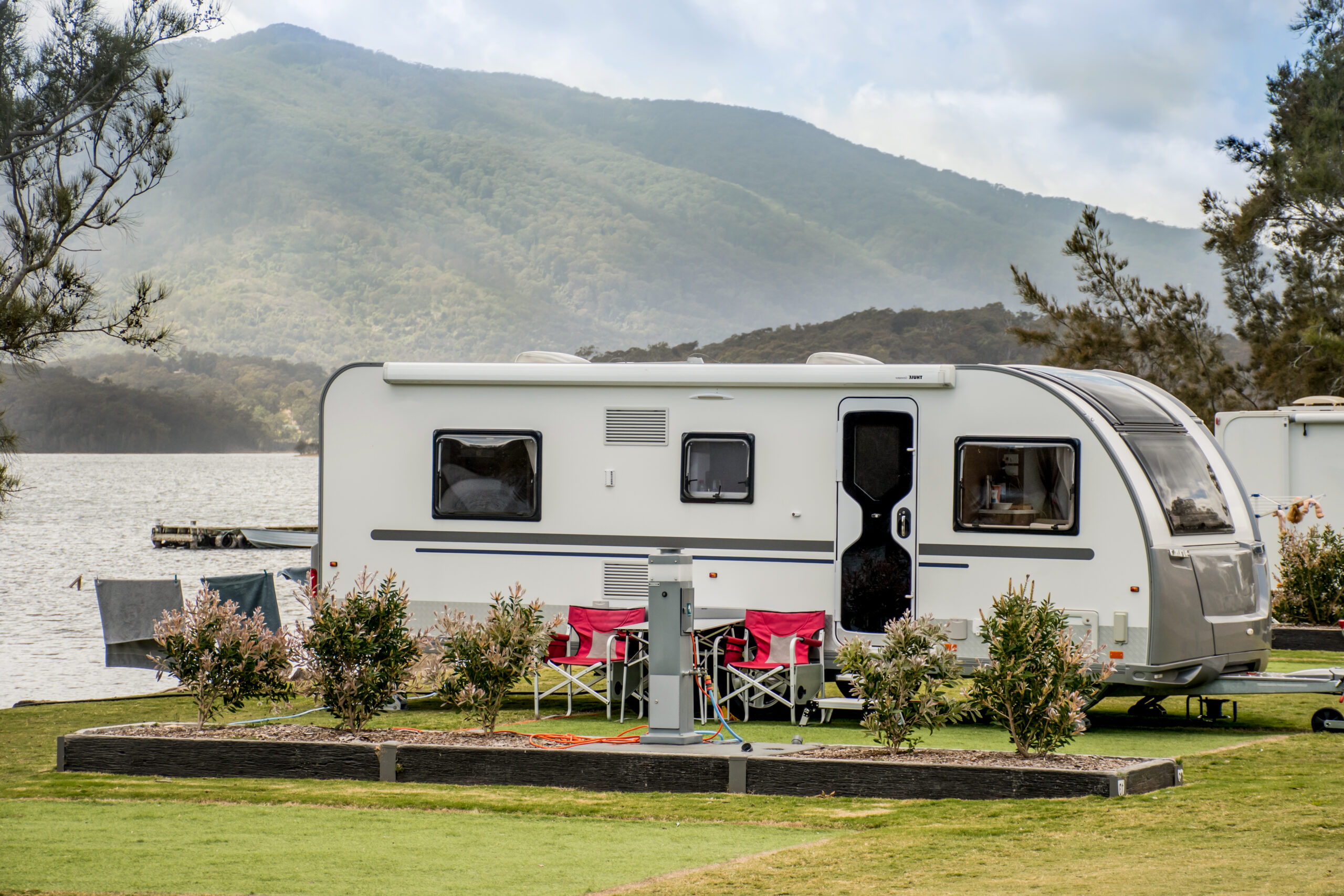Campgrounds and RV parks are popular destinations for outdoor enthusiasts and travelers looking for a taste of adventure. With the increase in popularity, it is essential for campground and RV park owners to ensure the safety of their guests and protect themselves from potential liability. One effective way to achieve this is by implementing waivers. In this article, we will discuss the purpose of waivers in campgrounds and RV parks, key components to include in a waiver document, best practices for waiver implementation and collection, communicating waiver policies effectively to guests, and customizing waivers to fit the needs of your campground or RV park.
Understanding the Purpose of Waivers in Campgrounds and RV Parks
Waivers play a crucial role in outdoor recreational activities as they provide a clear understanding between the campground or RV park and its guests. The primary purpose of a waiver is to make guests aware of the inherent risks associated with participating in activities within the premises. It is a legal document that aims to protect campground and RV park owners from potential lawsuits in the event of accidents or injuries.
When guests sign a waiver, they acknowledge that they are voluntarily assuming the risks involved in their stay and agree to release the campground or RV park from any liability arising from those risks. It is essential to understand that waivers do not absolve the campground or RV park owner of their duty to maintain a safe environment and exercise proper care. However, they serve as an extra layer of protection against unforeseen incidents.
Furthermore, waivers in campgrounds and RV parks often include clauses that outline specific rules and regulations that guests must adhere to during their stay. These rules may cover areas such as noise levels, pet policies, campfire guidelines, and waste disposal protocols. By signing the waiver, guests not only acknowledge the risks involved but also agree to abide by the established rules to ensure a harmonious and safe environment for all visitors.
In addition to outlining risks and rules, waivers may also include information on emergency procedures and contact details for local authorities or medical services. This ensures that guests are well-informed in case of any unforeseen emergencies and know how to seek assistance promptly. By providing this information within the waiver document, campground and RV park owners aim to enhance the overall safety and preparedness of their guests during their outdoor adventures.
Key Components to Include in a Waiver Document
Creating a comprehensive waiver document is crucial for ensuring its effectiveness and legal validity. Here are some key components that should be included:
- Clear and concise language: The waiver should be written in a language that is easily understandable to guests with varying levels of education or background. Avoid using complex legal jargon.
- Statement of risks: Clearly outline the possible risks associated with staying at the campground or RV park, such as hiking, swimming, or handling campfire equipment.
- Assumption of risks: Guests must acknowledge that they understand and accept the risks involved in participating in the activities provided by the campground or RV park.
- Release of liability: Guests should release the campground or RV park from any claims or demands that may arise due to accidents or injuries that occur during their stay.
- Severability clause: Include a clause indicating that if any part of the waiver is deemed invalid, the remaining sections will still be enforceable.
By including these key components, your waiver document will be more robust, providing better protection for your campground or RV park.
Moreover, it is essential to consider the specific activities and amenities offered at your campground or RV park when drafting a waiver document. For instance, if your location provides recreational equipment such as bicycles, kayaks, or ATVs for guest use, it is imperative to include a section addressing the proper usage and inherent risks associated with these activities. This not only informs guests of potential dangers but also emphasizes the importance of following safety guidelines.
Additionally, incorporating a section on emergency procedures can be beneficial. Outline the steps that guests should take in case of an emergency, including who to contact, where emergency supplies are located, and any relevant protocols to follow. By preparing guests for unexpected situations, you demonstrate a commitment to their safety and well-being while staying at your campground or RV park.
Best Practices for Waiver Implementation and Collection
Once you have created a comprehensive waiver, the next step is to implement and collect them from your guests. Here are a few best practices to consider:
- Make signing waivers a standard procedure: Incorporate the signing of waivers into your check-in process. This ensures that all guests are aware of the waiver and have the opportunity to review and sign it.
- Keep waivers up-to-date: Regularly review and update your waivers to reflect any changes in services or activities offered at your campground or RV park.
- Store waivers securely: Maintain a secure database or physical filing system to store signed waivers. This will ensure easy access and help you retrieve them if needed in the future.
- Train staff: Provide training to your staff on the importance of waivers, how to explain them to guests, and proper procedures for collecting and storing them.
By following these best practices, you can streamline the waiver implementation and collection process, ensuring your campground or RV park is well-protected.
Moreover, it is essential to have a clear and concise waiver document that outlines the risks involved in participating in activities at your campground or RV park. This document should also clearly state the rights guests are waiving by signing the waiver, helping to protect your business in case of any legal disputes.
Additionally, consider implementing an electronic waiver system to make the signing process more convenient for your guests. This can save time and paper, as well as provide a digital record of all signed waivers for easy reference.
Communicating Waiver Policies to Guests Effectively
Effectively communicating your waiver policies to guests is vital to ensure a transparent and informed relationship. Here are a few strategies to consider:
- Display waiver information prominently: Place signs and information boards at the check-in area, common areas, and near any activity sites. This highlights the importance of waivers and ensures guests are aware of the policy.
- Provide pre-arrival notifications: Send information about your waiver policy to guests before their arrival, either via email or on your website. This allows them to review the details in advance and come prepared.
- Include waiver details in your website: Have a dedicated webpage or section on your website that outlines the waiver policy, its purpose, and frequently asked questions. This enables guests to understand the rationale behind waivers.
By taking proactive measures to communicate your waiver policies effectively, you can create a positive and transparent relationship with your guests.
Another effective way to communicate waiver policies is through the use of visual aids. Consider creating infographics or videos that explain the waiver process in a clear and engaging manner. Visual content can often simplify complex information and make it more accessible to guests, increasing their understanding and compliance with the policy.
Furthermore, offering in-person waiver policy orientation sessions can enhance guests’ comprehension and address any questions or concerns they may have. These sessions can be conducted by staff members during check-in or at designated times throughout the day, providing a personal touch to the communication process and fostering a sense of trust and openness between guests and the establishment.
Customizing Waivers to Fit the Needs of Your Campground or RV Park
While there are general guidelines for creating waivers, it is crucial to customize them to fit the specific needs of your campground or RV park. Consider the following factors:
- Activities offered: Tailor your waiver to include specific activities that guests can participate in at your campground or RV park. This ensures that guests understand the risks associated with those particular activities.
- Age-specific waivers: If your campground or RV park caters to families with children, consider having separate sections in your waiver for adults and minors to address the differing levels of risk.
- Legal counsel: Consult with a lawyer experienced in the outdoor recreation industry to ensure that your waiver is legally sound and meets the specific requirements of your state or province.
By customizing your waivers, you are more likely to address the unique aspects of your campground or RV park, ultimately providing better protection for both your guests and your business.
When it comes to customizing waivers for your campground or RV park, it’s important to consider the activities offered. For example, if your campground offers hiking trails, fishing ponds, and zip-lining adventures, it’s essential to outline the potential risks associated with each activity in your waiver. By doing so, you ensure that guests are fully aware of the inherent dangers and can make informed decisions about their participation.
Furthermore, if your campground or RV park caters to families with children, it’s wise to include age-specific waivers. This approach recognizes that minors may have different levels of understanding and responsibility compared to adults. By having separate sections in your waiver for adults and minors, you can address the varying degrees of risk and ensure that all parties involved are adequately protected.
While creating waivers, it’s always advisable to seek legal counsel. Consulting with a lawyer experienced in the outdoor recreation industry will help you navigate the complex legal landscape and ensure that your waiver is legally sound. They can provide valuable insights into the specific requirements of your state or province, ensuring that your waiver meets all necessary regulations and offers maximum protection for your campground or RV park.
Remember, by customizing your waivers, you demonstrate a commitment to addressing the unique aspects of your campground or RV park. This not only enhances the safety of your guests but also safeguards the future of your business. So, take the time to create comprehensive and tailored waivers that prioritize the well-being of everyone involved.
In conclusion, creating waivers for campgrounds and RV parks is a critical step in ensuring the safety of your guests and protecting your business. By understanding the purpose of waivers, including key components in the document, implementing best practices for collection, effectively communicating waiver policies to guests, and customizing waivers to fit your specific needs, you can create a comprehensive and legally valid waiver system. Remember, creating a safe and enjoyable experience for your guests should always be a top priority.
Frequently Asked Questions
- What is the purpose of a waiver for a campground or RV park?
- A waiver serves to inform guests of the inherent risks associated with activities within the campground or RV park, ensuring guests are aware and agree to release the property from liability in the event of accidents or injuries. It also outlines rules and emergency procedures, enhancing safety and preparedness.
- What key components should be included in a waiver document?
- Essential components of a waiver include clear language understandable to all guests, a detailed statement of risks involved, an assumption of risk by the guest, a release of liability clause, and a severability clause to maintain the document’s enforceability even if part of it is deemed invalid.
- How can campground or RV park owners effectively implement and collect waivers?
- Incorporate waiver signing into the check-in process, keep waivers updated to reflect any changes in activities or services, securely store signed waivers, and train staff on the importance and handling of waivers.
- What strategies can be used to effectively communicate waiver policies to guests?
- Display waiver information prominently on the premises and on the website, provide pre-arrival notifications about the waiver policy, and utilize visual aids or in-person sessions to explain the waivers clearly and address any guest queries.
- How can waivers be customized to fit the specific needs of a campground or RV park?
- Tailor waivers to include specific activities offered, consider age-specific waivers for adults and minors to account for different levels of risk, and consult with legal counsel to ensure the waiver is legally sound and complies with local regulations.






